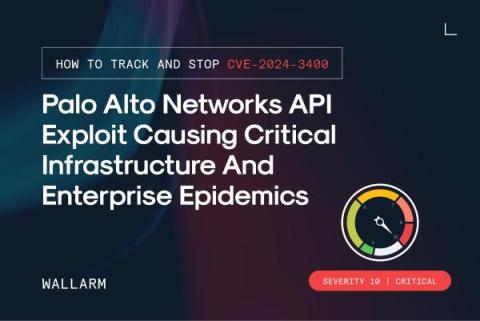How to track and stop CVE-2024-3400: Palo Alto Networks API Exploit Causing Critical Infrastructure and Enterprise Epidemics
On Friday April 12, Palo Alto disclosed that some versions of PAN-OS are not only vulnerable to remote code execution, but that the vulnerability has been actively exploited to install backdoors on Palo Alto firewalls. A patch is expected to be available on April 14th. The advisory from Palo Alto is here. Palo Alto has marked this vulnerability as critical and NVD has scored it a 10.0 with CVSSv3. Wallarm currently detects attacks against this vulnerability with no additional configuration required.











